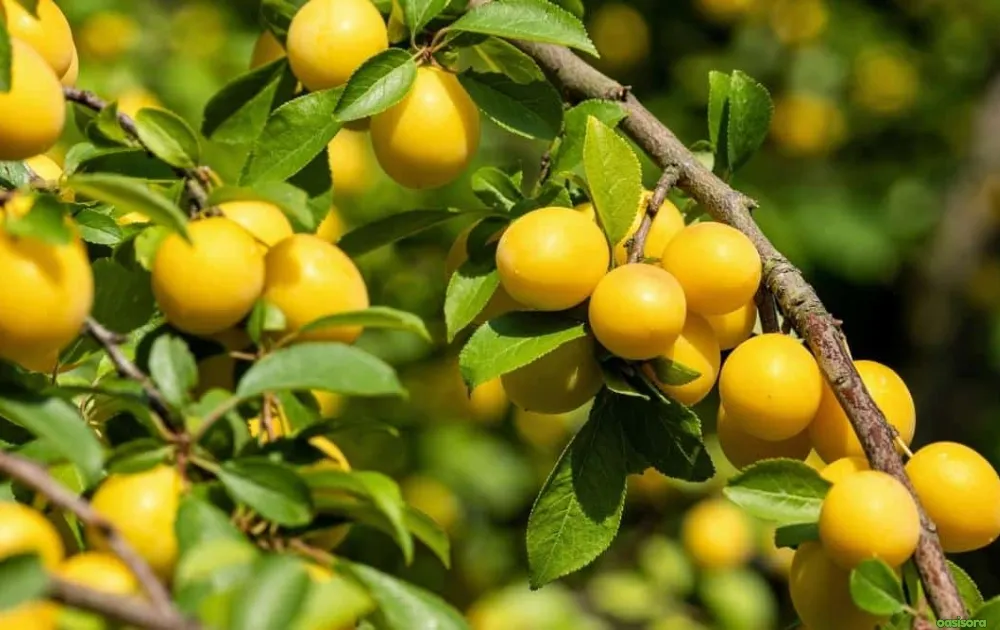
Living in Arizona teaches you that the desert is tougher than it looks, but it can still grow life that surprises you. With a bit of care and the right trees, even hard soil and bright sun can give you juicy and sweet fruit.
Today, in this guide, I am sharing what I have learned from planting trees that love heat, need little water, and bring real color to the yard. By the end, you’ll know how to pick and care for the best fruit trees to grow in Arizona and start your own garden that thrives best even in a desert.
Understanding Arizona’s Climate Before You Plant
Before you start planting fruit trees, it helps to know that Arizona has more than one kind of weather. The state may look dry and sunny everywhere, but each region tells a different story. Knowing your local climate is the first step to growing trees that stay healthy and give plenty of fruit.
Low Desert Areas
The low desert areas, such as Phoenix, Yuma, and Tucson, stay warm most of the year. Summers are very hot, and winters are short and mild. These places are perfect for tropical and citrus trees that love the sun. Still, too much heat can harm young plants, so a bit of afternoon shade and deep watering keep them safe.
High Desert Areas
The high desert regions like Prescott, Flagstaff, and Sedona feel cooler and sit at higher elevations. Nights are colder, and winter lasts longer in these areas. Fruit that needs more chill hours, such as apples and pears, grows better there. The cool nights help the fruit keep its bright color and crisp flavor.
Chill Hours
According to the USDA Plant Hardiness Zone Map, Arizona’s regions fall into different zones that show which trees can handle local heat and winter chill best. Chill hours are the cool hours a tree needs in winter to rest and gain strength for spring. If it doesn’t get enough, it may grow leaves but very few fruits.
Most low-chill trees need about 100 to 300 hours of cold temperatures. That’s why choosing the best fruit trees to grow in Arizona means finding ones that match your local weather patterns.
I learned this the hard way when I planted a variety that needed long and cold winters. It grew tall but gave no fruit. Since then, I have always tried to pick low-chill types that always reward me with good harvests.
Microclimates
Another helpful idea is to use microclimates. Walls, fences, and shaded patios can change the temperature in small areas. A sunny wall keeps trees warm at night, and light shade protects them during hot afternoons. By planting wisely, you make your own little garden zones where trees feel right at home.
When you understand Arizona’s mix of heat, cold, and sun, growing fruit trees becomes much easier. Nature starts working with you, not against you.
Top Citrus Trees That Thrive in Arizona
Citrus trees are some of the happiest plants in the state. They love the dry air, sandy soil, and bright light that fill most of the year. Once you plant them right, they grow strong and give fruit for many seasons.
The University of Arizona Cooperative Extension explains that citrus trees perform best in warm and low-desert zones where winters stay mild and the soil drains well, exactly what most Arizona yards provide. That is why they are counted among the best fruit trees to grow in Arizona.
1. Lemon Trees
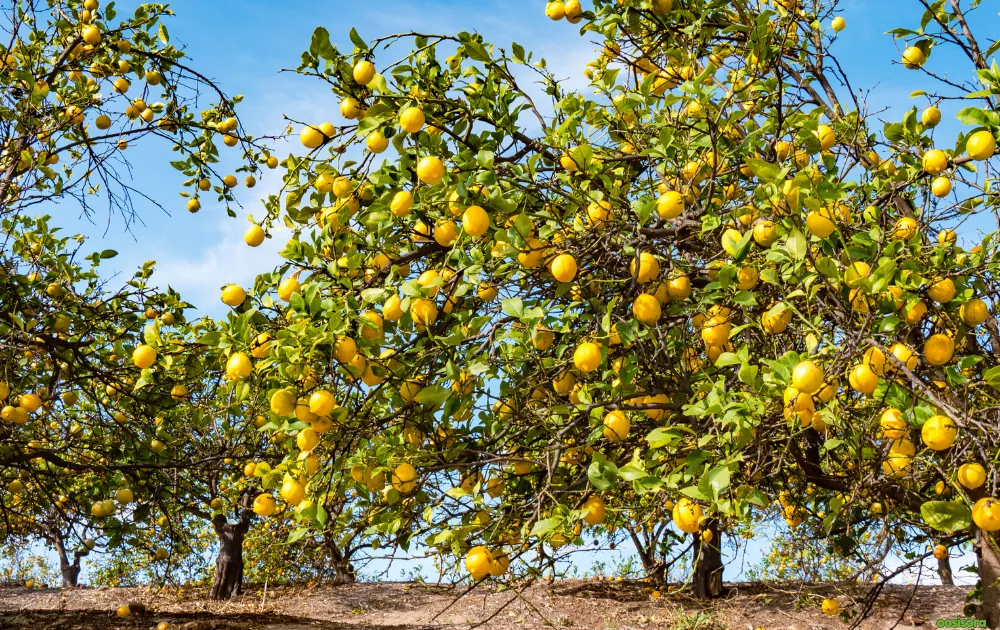
Lemon Trees
Lemons grow easily in the desert. The Improved Meyer lemon is soft and rich in taste, while Lisbon gives that sharp and classic flavor. The lemon trees can grow and fruit all year if you water them deeply and keep their soil well-drained. Moreover, a little shade in the afternoon helps them stay healthy throughout long summers.
2. Orange Trees

Orange Tree
Both Valencia and Navel oranges do well under the Arizona sun. Their sweet and juicy fruit tastes best when picked fresh. In addition, they also make great shade trees once mature. I’ve noticed that when cared for properly with compost and watered once or twice a week, orange trees stay green even in high heat.
3. Grapefruit Trees
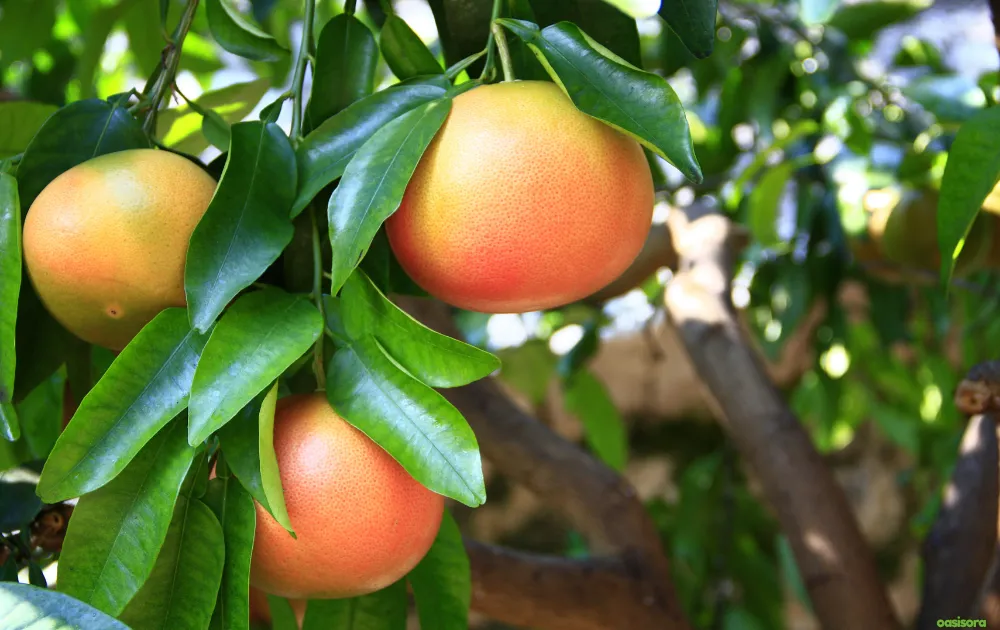
Grapefruit
If you like mild, low-acid fruit, try Rio Red or Oro Blanco grapefruit. They are strong growers that handle heat and wind well. Grapefruit trees need a little space to spread their roots. Additionally, they like full sun most of the day. Their bright yellow fruit adds color and freshness to any garden.
4. Tangerine Trees
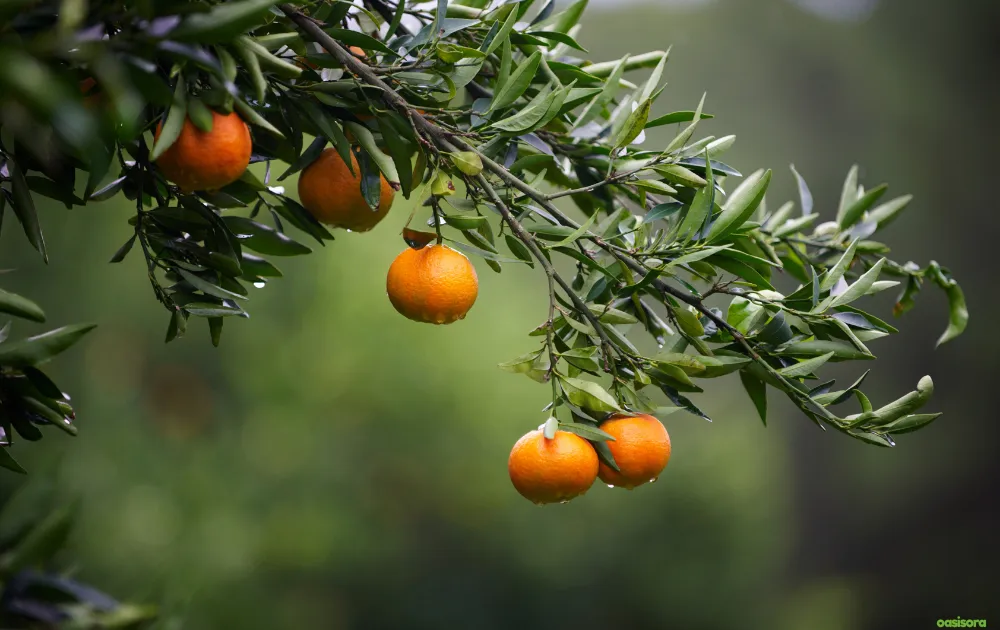
Tangerine
Compact and neat, Clementine and Satsuma tangerines are perfect for smaller yards. They ripen early, often before winter ends, and their easy-peel fruit is a family favorite. These trees stay beautiful all year and can handle cool nights without trouble.
All citrus trees enjoy full sun but appreciate soft shade during the hottest hours. With steady watering, compost-rich soil, and light pruning, they stay green and full of fruit. If you’re looking for a simple start, these are truly the best fruit trees to grow in Arizona for both beginners and seasoned gardeners.
Non-Citrus Fruit Trees That Grow Well in Arizona
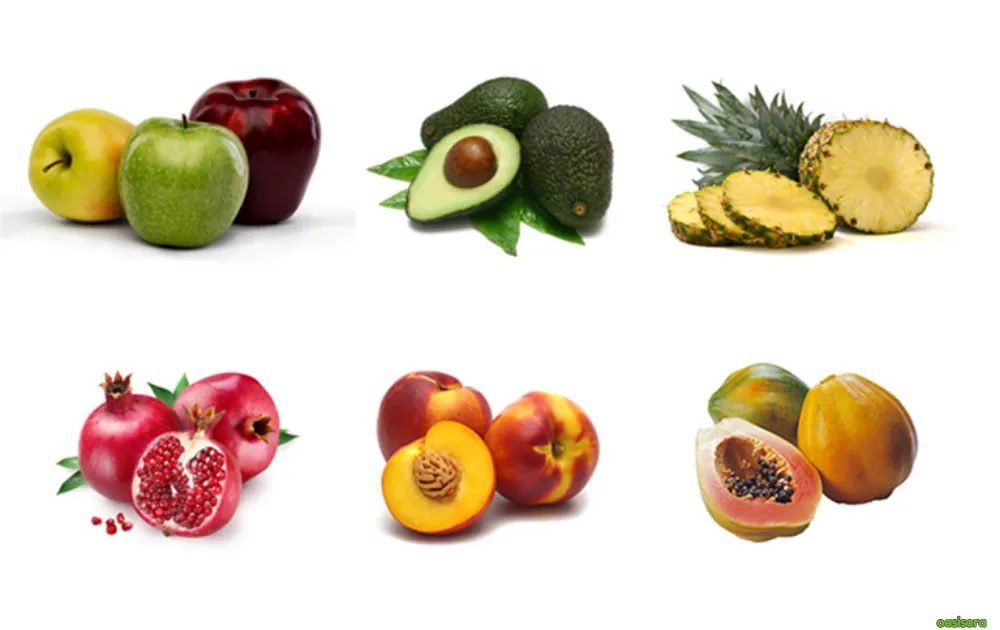
Non-Citrus Fruit Trees
Arizona isn’t just about citrus trees. Many other fruit trees can handle its bright sun and dry soil if you pick the right ones. Through my own trials, I experienced how the right fruit trees can transform even the hottest Arizona yard into a cool and colorful spot.
1. Stone Fruits (Require Low-Chill Varieties)

Stone fruits bring sweetness and color to desert gardens. They grow fast, need little care, and reward you early in the season with tasty fruit.
Peach (Desert Gold, Florida Prince)
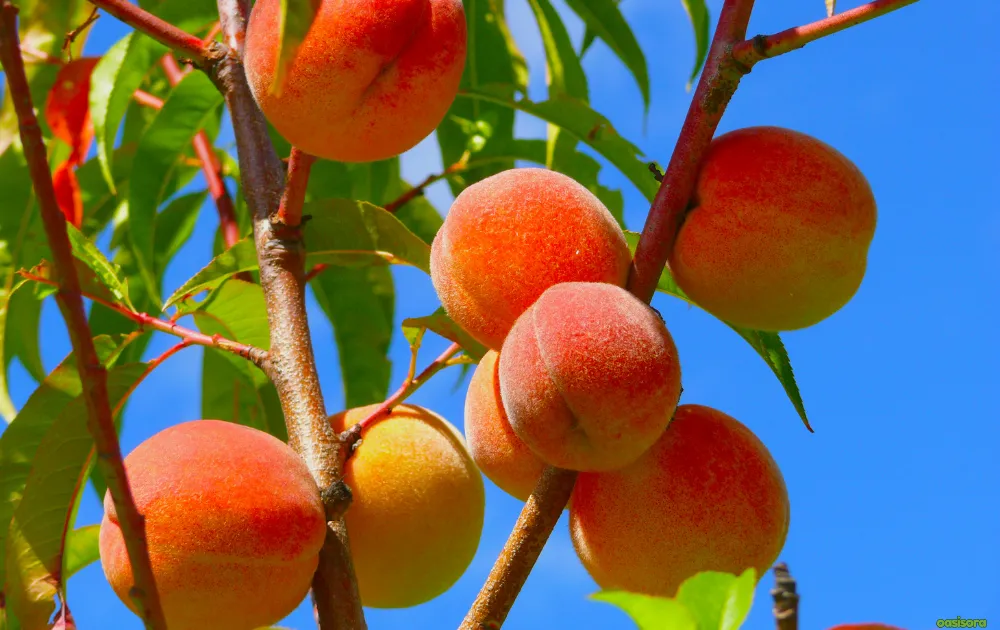
Peach
Peach trees love Arizona’s warm weather. Desert Gold and Florida Prince ripen early and stay soft and juicy, even when summer feels too hot. Moreover, deep watering keeps them happy and full of fruit.
Plum (Santa Rosa)
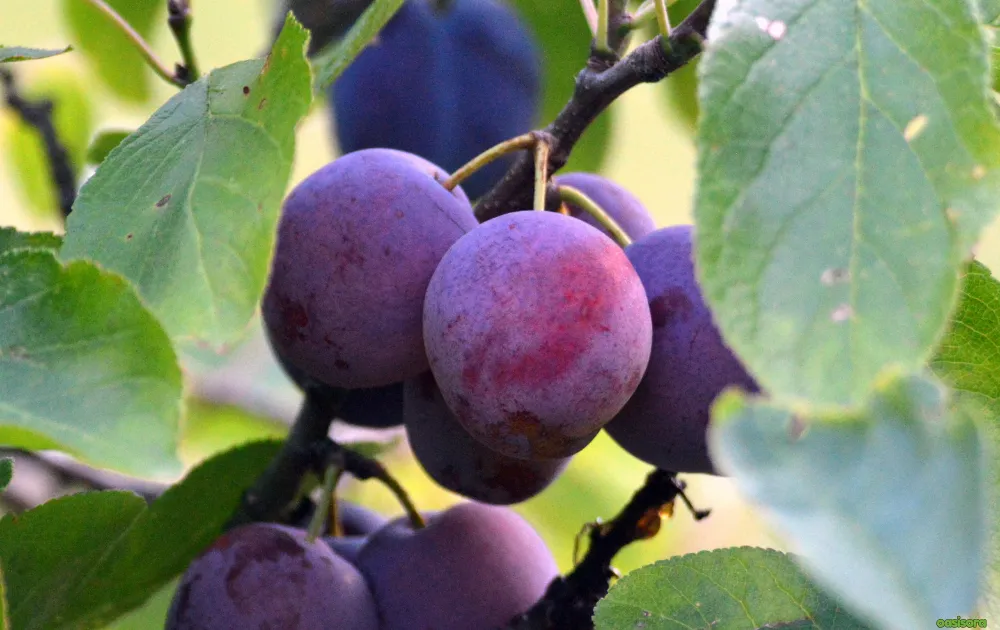
Plum
The Santa Rosa plum is one of the easiest to grow. Its red skin and rich, tangy flavor make it a favorite for eating fresh or making jam. It only needs a few cool nights to set fruit, which makes it one of the best fruit trees to grow in Arizona for gardeners who want something simple and quickly rewarding.
Apricot (Katy, Gold Kist)
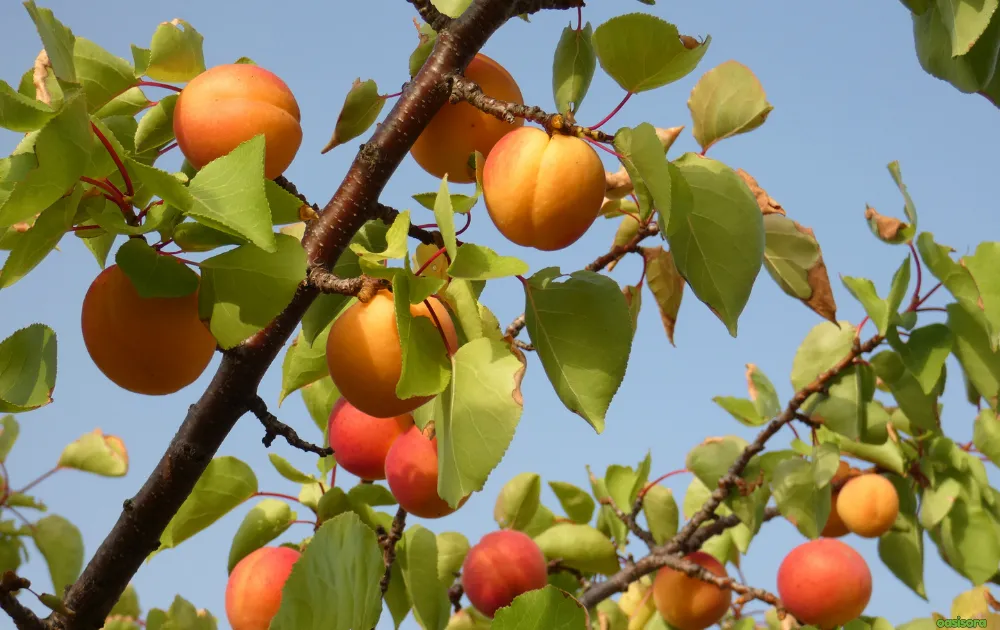
Apricot
Gold Kist and Katy apricots do well in Arizona’s dry air and warm sunshine. They bloom early, fill the yard with soft pink flowers, and bring golden fruit by early summer. Typically, these are among the easiest apricots to care for in desert gardens.
Nectarine (Double Delight)
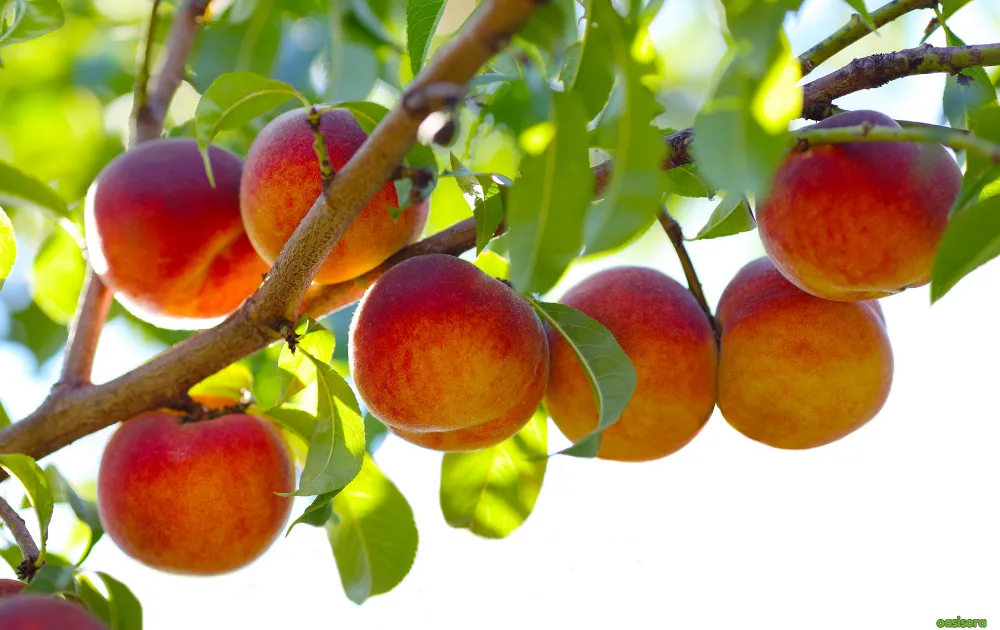
Nectarine
The Double Delight nectarine looks and tastes amazing with its bright red skin and sweet golden flesh. It grows neatly, stays compact, and adds beauty as well as flavor to any Arizona backyard.
2. Apples and Pears (Choose Low-Chill Types)
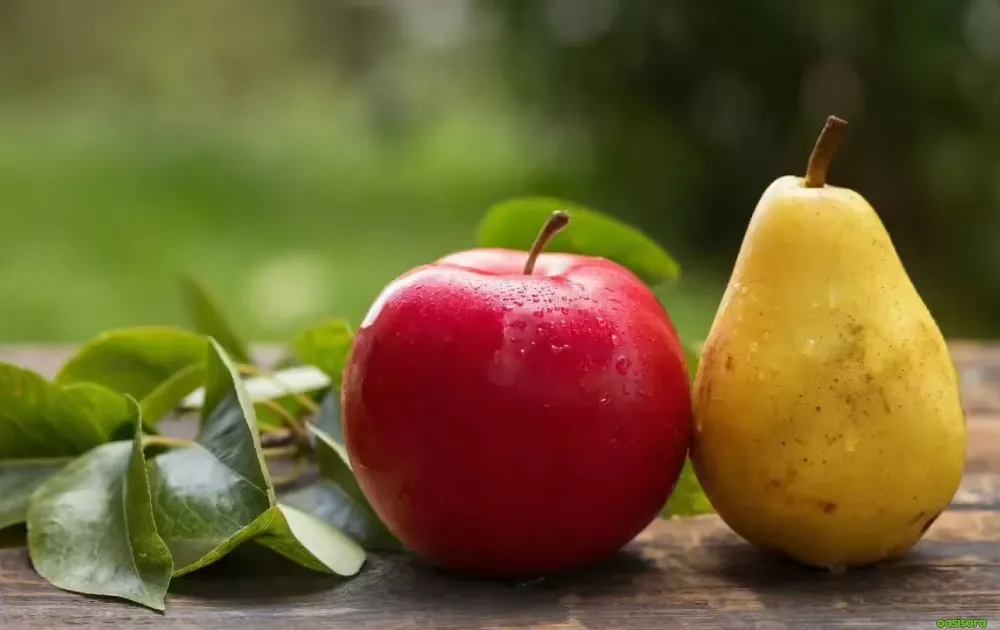
Apple & Pears
Even apples and pears can grow in warm areas if you choose low-chill kinds. They bring crisp, fresh flavors to Arizona gardens. As stated by the University of Minnesota Extension, selecting low-chill pear and apple varieties is key to success in warm climates like Arizona, where cold winters are short.
Anna Apple
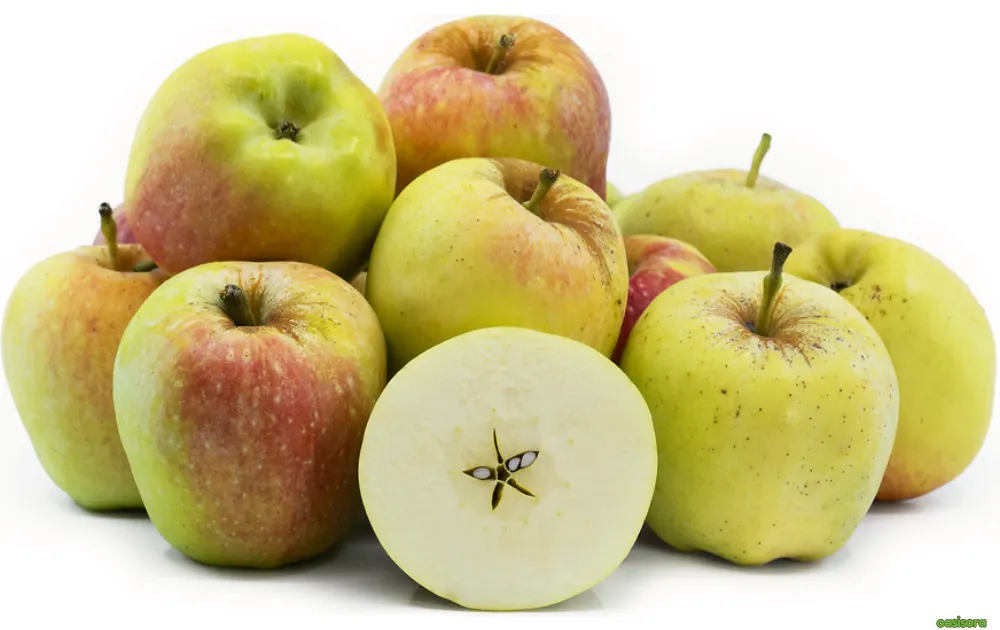
The Anna apple tree grows fast and produces crunchy, sweet fruit that stays fresh for weeks. It does well even in mild winters and fruits early in the season, often before the summer heat peaks. Over the years, I have noticed how the right mix of low-chill and heat-loving trees can quietly turn any Arizona yard into a fruit-filled oasis.
Dorsett Golden Apple
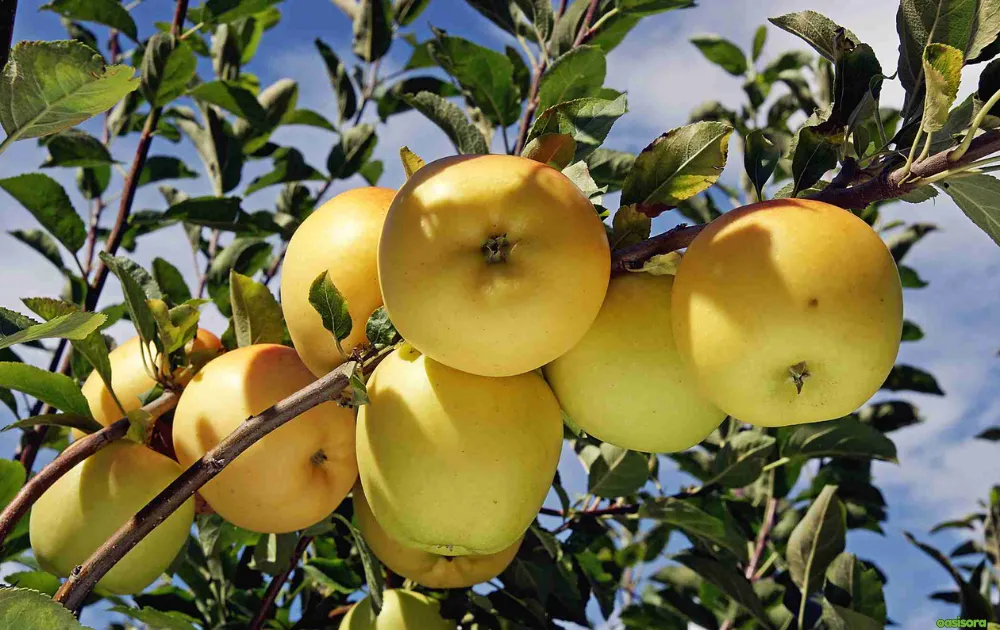
Dorsett Golden Apple
Dorsett Golden grows best beside an Anna Apple. Together, they make a perfect pair for Arizona gardens. The tree gives firm, golden fruit with a rich, balanced taste that’s great for eating fresh or baking. When planted together, both trees give a stronger crop, making them some of the best fruit trees to grow in Arizona for steady and healthy harvests year after year.
Asian Pear (20th Century, Shinseiki)
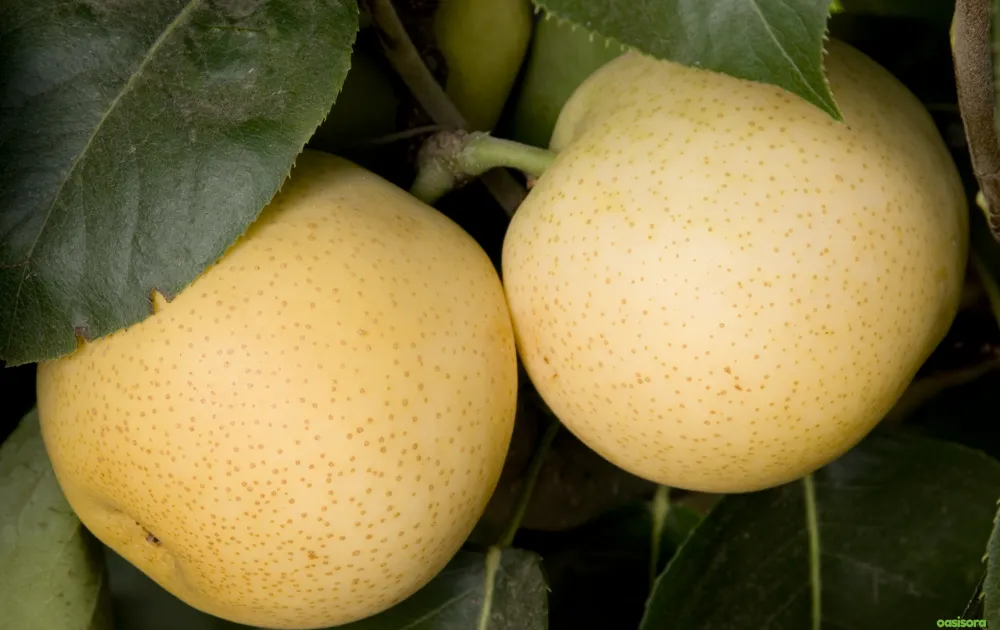
Asian Pear
20th Century and Shinseiki pears love sunlight and dry soil, which makes them perfect for Arizona’s weather. Their crisp and juicy texture feels like a mix between a pear and an apple. These low-chill varieties grow easily and stay productive even with little care. Therefore, they are an excellent choice for anyone who wants fresh and crunchy fruit straight from their backyard.
3. Tropical and Subtropical Options
If you like something a little different, tropical trees are great choices. They grow fast, love the heat, and add beauty to any yard.
Fig (Black Mission, Kadota)
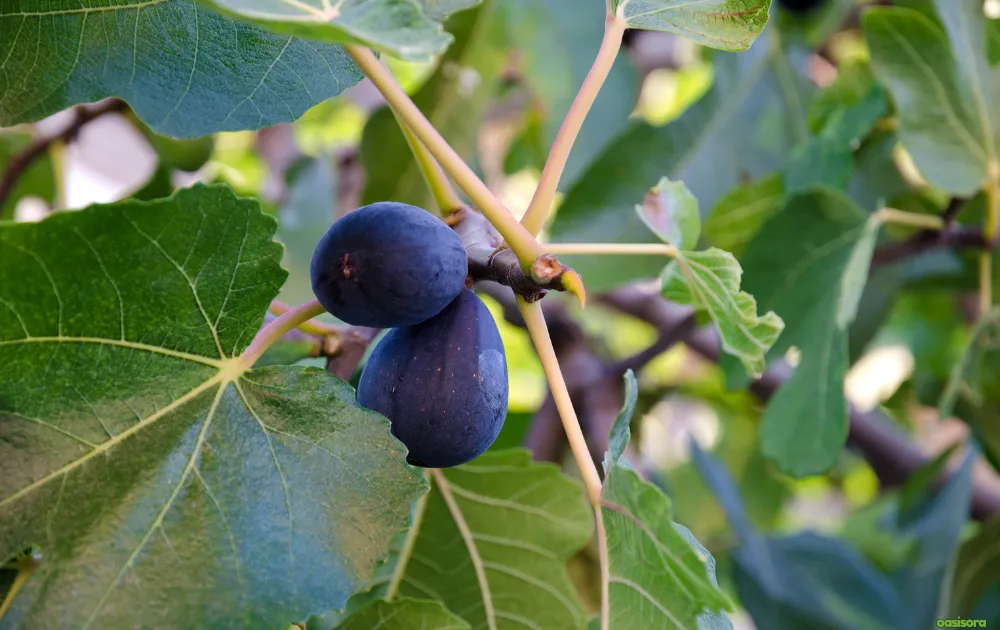
Black Mission Fig
Figs such as Black Mission and Kadota grow naturally in full sun. They need very little water once settled and give fruit twice a year. They grow fast and stay healthy even in the dry air. That is why many gardeners say figs are among the best fruit trees to grow in Arizona for steady harvests and easy care.
Pomegranate (Wonderful, Eversweet)
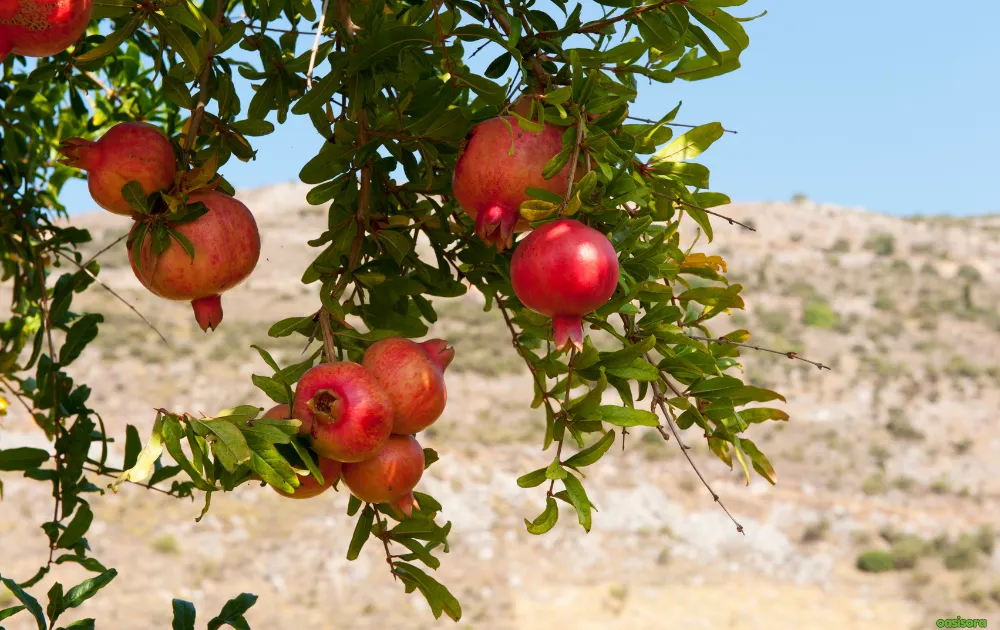
Pomegranate
Wonderful and Eversweet pomegranates are strong, drought-tolerant, and full of color. I planted one near a sunny wall years ago, and it still gives bright red fruit each fall with almost no trouble. Moreover, their deep roots handle heat easily, making them perfect for desert-style gardens.
Jujube (Li, Lang)
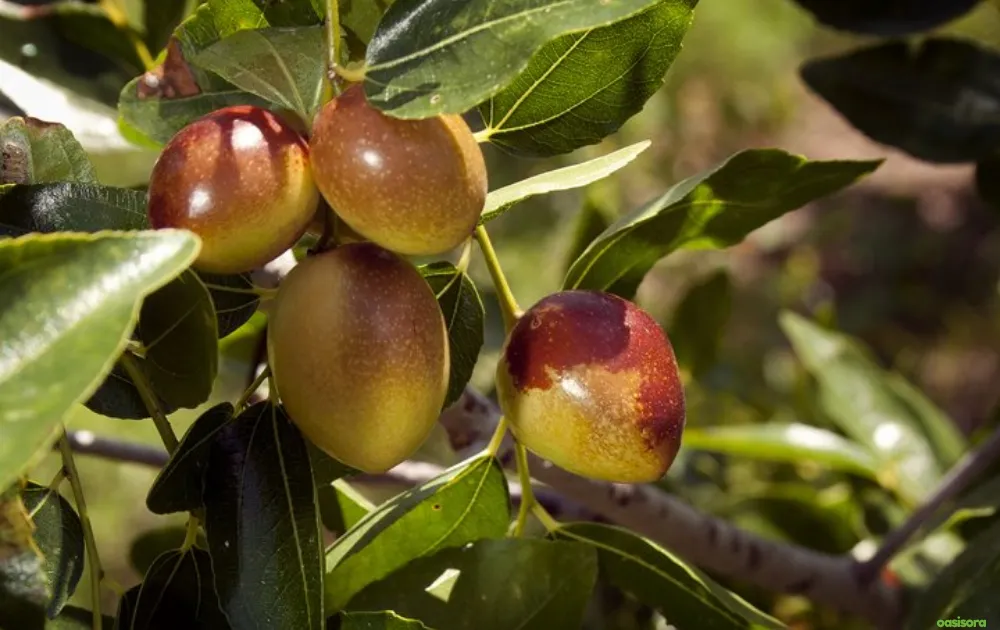
Jujube
The Li and Lang jujubes stay sweet, crisp, and pest-free. They are some of the easiest fruit trees to care for in Arizona. Even with little water or care, they keep growing and fruiting year after year, consistently.
Olive (Manzanillo)
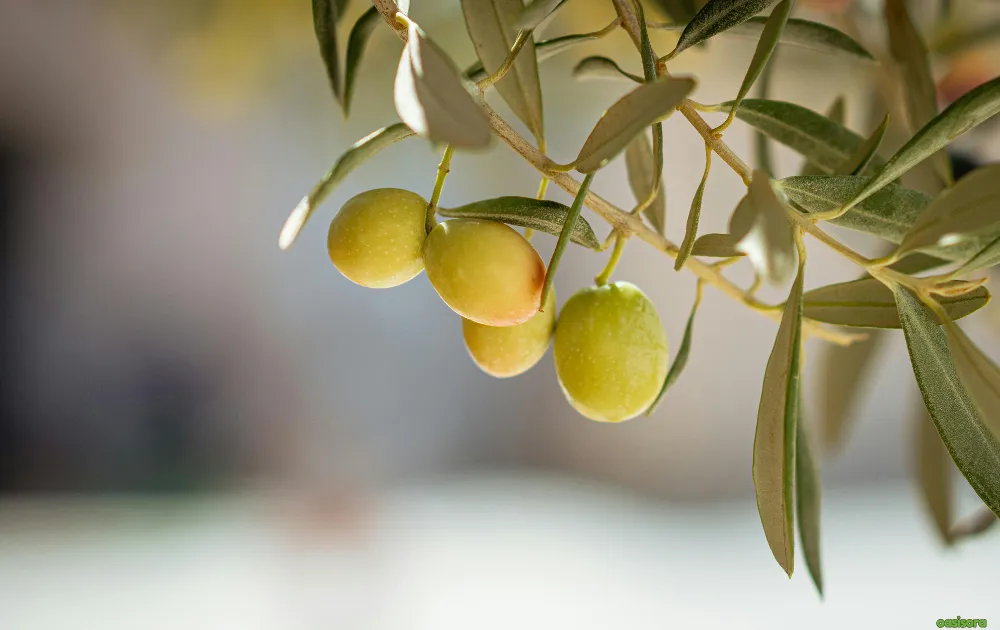
Olive
The Manzanillo olive grows slowly but lives for decades. Its silver-green leaves shine under the desert sun, giving a peaceful look to any garden. In addition, the tree also brings small harvests of smooth, rich olives that reflect true Mediterranean charm.
4. Other Great Picks
Besides all those mentioned above, a few more trees can bring shade, color, and variety to your garden year after year, especially when you choose from the best fruit trees to grow in Arizona that love the sun and withstand dry air well.
Mulberry (Pakistan, Shangri-La)
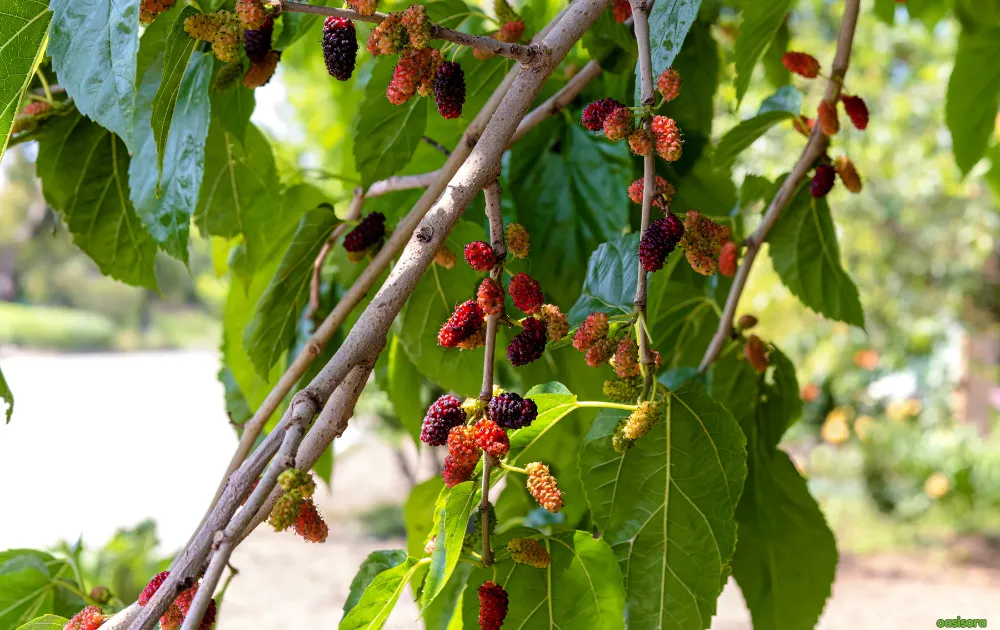
Mulberry
Pakistan and Shangri-La mulberries grow tall, spread wide, and offer juicy, dark berries through summer. They also make great shade trees. Once mature, they fill the yard with cool shade and fruit that kids and birds both love.
Date Palm (Medjool)

Date Palm
The Medjool date palm is made for desert heat. It loves full sun and gives soft, golden fruit in late summer. Moreover, its tall, graceful shape also adds a tropical touch to Arizona gardens while staying easy to care for.
I once planted a Medjool in my yard and was amazed by how quickly it adapted to the heat, standing tall through long and dry summers.
Persimmon (Fuyu)
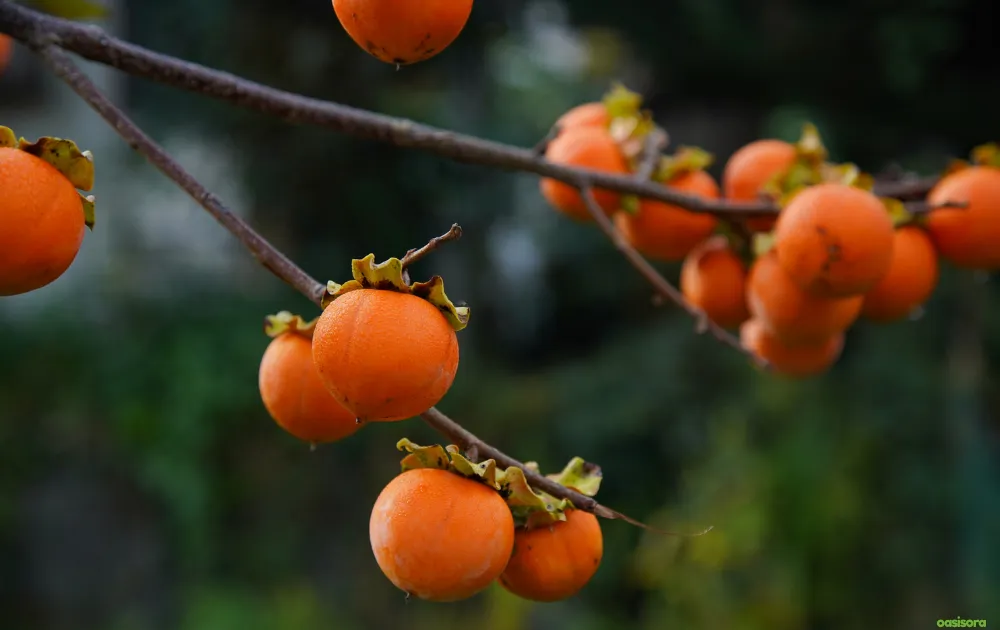
Persimmon
The Fuyu persimmon enjoys mild winters and ripens late in the year. Its orange fruit looks beautiful and tastes sweet even when the weather cools. Many gardeners enjoy its freshness of the tree, as it brings color and flavor when most other trees in the yard rest.
Nevertheless, each of these trees adds life, shade, and flavor to the desert. With the right care, they stay strong and bear fruit for years, proving they’re truly among the best fruit trees to grow in Arizona.
Best Fruit Trees for Beginners in Arizona
Planting your first fruit garden in this state brings plenty of excitement and a few questions along the way. Somehow, the heat requirement, dry soil, and strong sunlight can make it hard to know what to plant first.
I learned early on that some trees are much easier to plant and care for than others. These forgiving choices don’t just survive here; they truly thrive, proving some of the best fruit trees to grow in Arizona for new gardeners.
1. Meyer Lemon
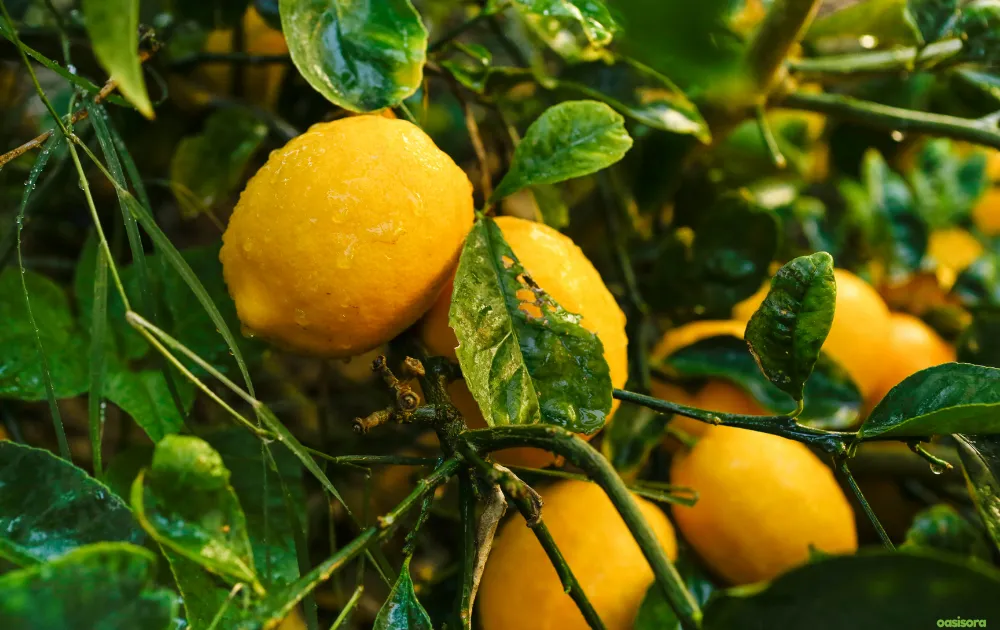
Mayer Lemon
The Meyer lemon is one of the easiest citrus trees for beginners. This tree grows quickly, gives fruit almost all year, and fills the garden with a fresh and light scent. Its lemons have a soft and sweet taste that is perfect for drinks or cooking. It needs plenty of sun and a little afternoon shade during the hottest months.
2. Anna Apple

This apple is a beginner’s favorite across Arizona. It fruits early, stays crisp, and does well with few chill hours. Interestingly, the Anna Apple also grows quickly, so you don’t have to wait long for your first harvest. Plant it where it gets full sun and steady watering, and it will reward you every season as one of the best fruit trees to grow in Arizona for anyone starting fresh.
3. Desert Gold Peach

Desert Gold Peach
If you want soft, sweet fruit early in the year, the Desert Gold Peach is perfect. It’s one of the few peaches that handle strong Arizona heat with ease. Although the tree stays small, it grows fast and fruits in just a couple of years.
4. Fig (Black Mission)

Fig (Black Mission)
Black Mission figs are particularly made for Arizona’s climate. They love sunshine, need little care, and often give two crops a year. Moreover, this dark fruit tastes rich and sweet, and its tree looks beautiful in any yard.
6. Pomegranate (Wonderful)

Pomegranate
The Wonderful Pomegranate lives up to its name. It is strong, drought-tolerant, and one of the best fruit trees to grow in Arizona if you want steady results. Once it’s rooted, it needs very little care.
I planted one during my first year of gardening, and it still grows heavy with fruit each fall. Undoubtedly, these trees are a great way to have a fresh new start. They grow fast, stay healthy in heat, and fill your garden with a variety of colors and life. With just a little care, you’ll be picking fresh fruit before you know it.
How to Care for Fruit Trees in Arizona’s Heat?
Arizona’s heat can be tough, but fruit trees can still grow if you care for them the right way. I’ve learned that even a little attention to light, water, and soil goes a long way in keeping them green and healthy. Once you understand what each tree needs, you’ll see how easily they can adapt to their surrounding environment and climate.
Below are some crucial factors to understand, consider, and take into account beforehand:
Sun and Shade
Indeed, sunlight gives trees their energy, but too much of it can burn new leaves and fruit.
Young trees do best with morning sun and afternoon shade until they grow stronger.
You can plant them near a wall or use a light shade cloth in summer.
Mature trees can handle more light but still enjoy soft shade on very hot days.
Watering Schedule
Fruit trees in Arizona need deep watering to grow strong roots. Shallow watering makes roots weak and dries the soil too fast. I water my trees two or three times a week in summer, so that the water soaks deep into the soil. On the other hand, in winter, they rest more, so once every week or two is enough. Moreover, a layer of mulch around the base keeps the roots cool and holds moisture. If you follow a simple watering routine, the best fruit trees to grow in Arizona will handle the heat and keep growing well.
Soil and Fertilizer
Arizona soil can be dry and sandy, which means water runs off quickly. Mixing in compost and organic matter improves drainage and helps the soil keep nutrients in place. Fertilize citrus trees three times a year—in spring, early summer, and late summer. For other fruit trees, sprinkling a fertilizer twice a year is enough. Always water before and after applying fertilizers to the soil to protect the roots.
Pruning Tips
Pruning is one of the best ways to help your trees grow healthy fruit. Winter is the best time to prune because trees rest then. Remove dead or tangled branches and shape the tree so light touches every part. A light trim in summer keeps it neat and stops branches from breaking under heavy fruit.
Caring for trees in this way helps them stay strong even when temperatures rise. Once you get used to Arizona’s rhythm of sun, water, and soil, your garden will reward you with steady harvests from some of the best fruit trees to grow in Arizona.
Common Mistakes to Avoid
Small mistakes can make a big difference when growing fruit trees. I learned this myself. Fixing those mistakes helped my trees grow stronger. Here is what new gardeners should watch out for.
Choosing High-Chill Fruit Trees
Some fruit trees need long and cold winters to grow fruit. These are called high-chill trees. They rarely do well in desert weather. In most parts of Arizona, the winters are too short and warm, so these trees grow leaves but never fruit. From what I’ve seen, the best fruit trees to grow in Arizona are always low-chill varieties that match the local climate and stay healthy year after year.
Overwatering in Clay Soil
Clay soil holds water for a long time. If you water too often, the roots can stay wet and begin to rot. Instead, water deeply but not frequently. Make sure the soil drains well. Also, add compost to improve texture and airflow from time to time.
Ignoring Pollination Pairs
Many fruit trees need another variety nearby to make fruit. A good example is the Anna Apple and Dorsett Golden Apple. When planted together, both trees bloom better and yield more fruit. Skipping this step can leave you with healthy trees but no harvest.
Not Protecting Young Trees from Sunburn
Arizona’s sun is strong, especially in summer. Young trees can burn if they stay under the sun all day. Give them morning light and some shade in the afternoon, or use a light shade cloth to protect them. Many gardeners also paint the trunks white to stop the bark from cracking.
When you avoid these small but common errors, your trees grow faster and stay healthier. With steady care and the right choices, you’ll enjoy strong harvests from the best fruit trees.
Best Time to Plant Fruit Trees in Arizona
The time you plant a fruit tree makes a big difference in how it turns out over time. I learned this after planting a few too early in the summer heat. Arizona’s seasons matter more than most people think. Now, I have learned the best ways to help the best fruit trees to grow in Arizona stay healthy and full of life through every season.
1. Ideal Planting Seasons (October to March)
The best time to plant fruit trees in Arizona is from late fall to early spring. The cooler weather helps trees settle their roots before the summer heat begins. Planting between October and March gives them time to grow strong and adjust slowly. Additionally, this peaceful season offers the best chance for new trees to take hold and grow.
2. Avoid Planting in Peak Summer (June to August)
Summer in Arizona can be brutal. With daytime temperatures rising above 100°F, the heat can dry out soil fast and stress new trees before they can root properly. I once tried planting in July, and even with deep watering, the tree didn’t make it through the season. Therefore, it is much better to wait until fall when the air is cooler and the soil holds moisture for a long time.
3. Pro Tip: Use Mulch to Lock in Moisture
Mulch is your best friend, especially in desert gardening. A thick layer of mulch around the base keeps the soil cool and moist, even on the hottest days. It also helps stop weeds and slowly improves the soil’s health. Just make sure the mulch stays a few inches away from the trunk to prevent rot.
If you follow the right timing and care steps, your trees grow stronger and fruit faster. Whether you are planting a small garden or a full orchard, these simple habits can help you develop the best fruit trees to grow in Arizona with confidence.
Bonus: Fruit Trees to Avoid in Arizona
Not every fruit tree can handle Arizona’s dry air and hot days. Some look beautiful in catalogs but end up struggling once planted there. I learned this the hard way when a few of my early choices never fruited, no matter how much I cared for them. Knowing what not to plant can save you time, money, and effort.
1. Cherry Trees
Cherry trees are stunning but sadly not suited for the desert. They need long and cold winters, what gardeners call high chill hours, to bloom and fruit. Arizona’s mild winters don’t meet those needs. Even in the cooler parts of the state, cherries rarely thrive.
2. Apple Varieties with Over 600 Chill Hours
While some apples like Anna and Dorsett Golden do great here, others that need more than 600 chill hours hardl floursih. These trees grow plenty of leaves but never produce fruit. Always check the chill-hour requirement before planting to make sure it fits your area.
The Michigan State University Extension also informs growers that some fruit trees, like quince or other high-chill species, may sound appealing but struggle to adapt to hot, dry regions like Arizona.
3. Non-Drought-Tolerant Tropicals
Tropical trees like bananas or mangoes might sound exciting, but they’re not built for Arizona’s dry heat. These trees need more moisture, richer soil, and higher humidity than the desert can give. Even with care and shade, they don’t stay healthy for long. I’ve found it’s wiser to use your space for the best fruit trees to grow in Arizona that actually enjoy the sun and fit the local climate.
By avoiding trees that don’t suit the desert, you can spend your time growing the ones that love it here, like citrus, figs, peaches, and pomegranates. Pick the right ones, and you will enjoy easy and sweet harvests yearly.
Final Thoughts
Growing fruit trees in Arizona takes patience, your precious time, and a bit of learning along the way. Although the desert might seem tough, with care, it rewards you with fresh fruit almost all year long. I’ve seen how a small yard can turn into a green, living space full of color and shade. When you mix citrus, stone fruits, and heat-loving trees, your garden becomes more than a backyard; it becomes a true oasis.
Start simple and keep going with patience. With time, you’ll enjoy the taste of your own harvest from the best fruit trees to grow in Arizona. Take your tools, step into the sun, and begin planting to enjoy a little oasis.
FAQs
What are the easiest fruit trees to grow in Arizona?
Citrus trees such as lemons, oranges, and tangerines grow easily in Arizona. They love heat and need little care, while giving fruit throughout the year.
How much should I water my fruit trees in Arizona?
Water deeply two to three times a week in summer, and less in winter. The goal is to let the roots grow deep without staying soggy.
Can I grow apple trees in Arizona?
Yes, but pick low-chill types like Anna and Dorsett Golden. They grow well in warm weather and fruit early.
When is the best time to plant fruit trees?
Plant between late fall and early spring, from October to March. The mild weather helps young trees settle in before the harsh summer arrives.
How long does it take for fruit trees to grow in Arizona?
Most low-chill varieties start fruiting in 2–3 years. Citrus and figs are among the best fruit trees to grow in Arizona if you want quicker harvests.
